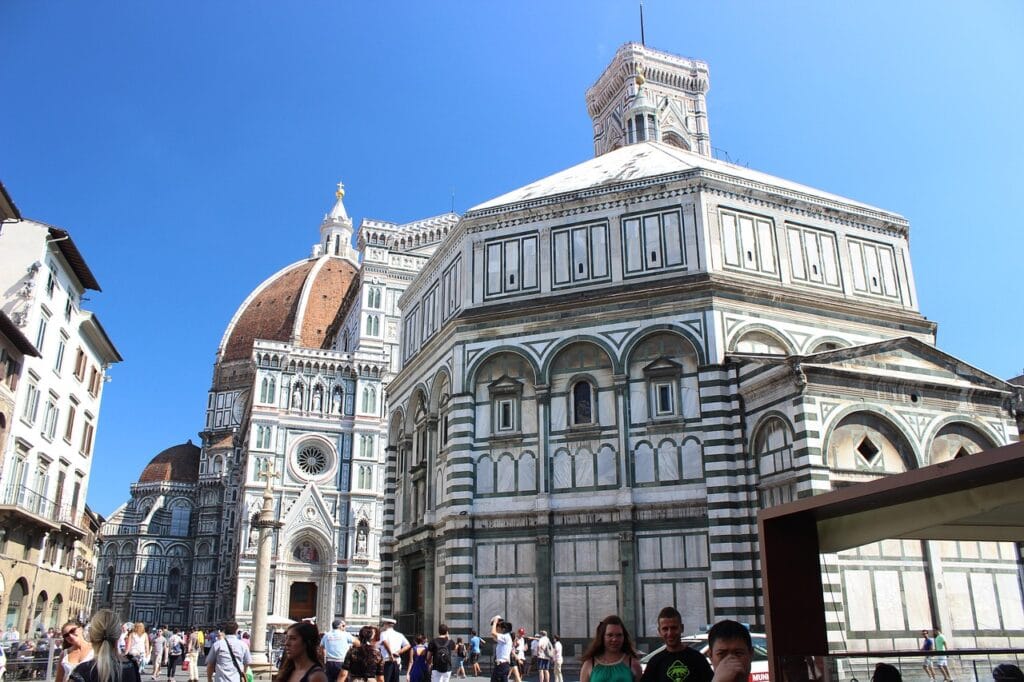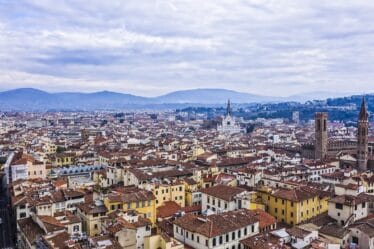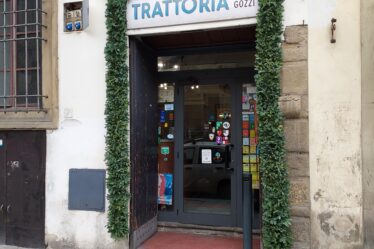

Tomb of Pope Giovanni XXIII: A Masterpiece of Renaissance Florence
The Tomb of Pope Giovanni XXIII is one of the most fascinating funerary monuments in Florence. Located inside the Battistero di San Giovanni, right across from the Florence Cathedral, this tomb is not just a burial site—it’s a unique example of early Renaissance sculpture and Florentine politics.
Giovanni XXIII, born Baldassarre Cossa in Procida around 1370, was one of the three claimants to the papal throne during the Western Schism. Though later considered an antipope, his influence was significant enough to be remembered in marble and bronze, thanks in large part to Cosimo de’ Medici, known as Cosimo the Elder. After Giovanni’s deposition at the Council of Constance, Cosimo protected him and brought him to Florence, where he spent his final years.
A Medici Legacy in Marble
When Giovanni XXIII died in 1419, he was buried in the Battistero di San Giovanni, one of the oldest and most sacred buildings in Florence. A few years after his death, Cosimo de’ Medici commissioned a tomb to honor his memory. The result was a remarkable collaboration between two of the most skilled artists of the time: Donatello and Michelozzo.
This funerary monument broke with medieval tradition. Unlike the flat tomb slabs common at the time, the Tomb of Pope Giovanni XXIII features a recumbent bronze effigy placed on a sarcophagus supported by lion’s paws. The tomb is framed by an elaborate marble canopy, creating a sense of both grandeur and solemnity. It became a template for future Renaissance tombs and is one of the first of its kind to combine sculpture and architecture in such harmony.
Artistic Innovation and Political Symbolism
Besides its artistic importance, the tomb also carries strong political symbolism. Donatello and Michelozzo portrayed Giovanni XXIII not as a disgraced antipope but as a dignified, legitimate religious leader. This was a bold statement—especially since his status was still disputed by the Church. However, Cosimo’s decision to celebrate Giovanni’s legacy served both as an act of loyalty and as a display of Medici power and influence in Florence.
Thanks to this support, the tomb remains not only a funerary monument but also a political and cultural statement of the early 15th century. It signals the growing importance of Florence as a center of art and diplomacy during the Renaissance.
Plan Your Visit
If you are planning a trip to Florence, visiting the Battistero di San Giovanni is a must. Located in Piazza del Duomo, it’s open daily and often included in combo tickets for the cathedral complex. Inside, you can admire not only the Tomb of Pope Giovanni XXIII, but also the stunning mosaics on the ceiling and the famous bronze doors by Ghiberti, known as the Gates of Paradise.
To learn more about this period and its art, you can also explore:
- The life and works of Donatello
- The Medici family’s influence on Florence
- A historical overview of the Western Schism on Britannica
Conclusion
The Tomb of Pope Giovanni XXIII is more than a burial monument—it’s a window into a pivotal moment in history, art, and politics. Through its bold design and unique story, it represents the birth of Renaissance art, the power of the Medici family, and the complex legacy of a controversial pope. For those passionate about Florence, this tomb is a hidden gem that shouldn’t be missed.



